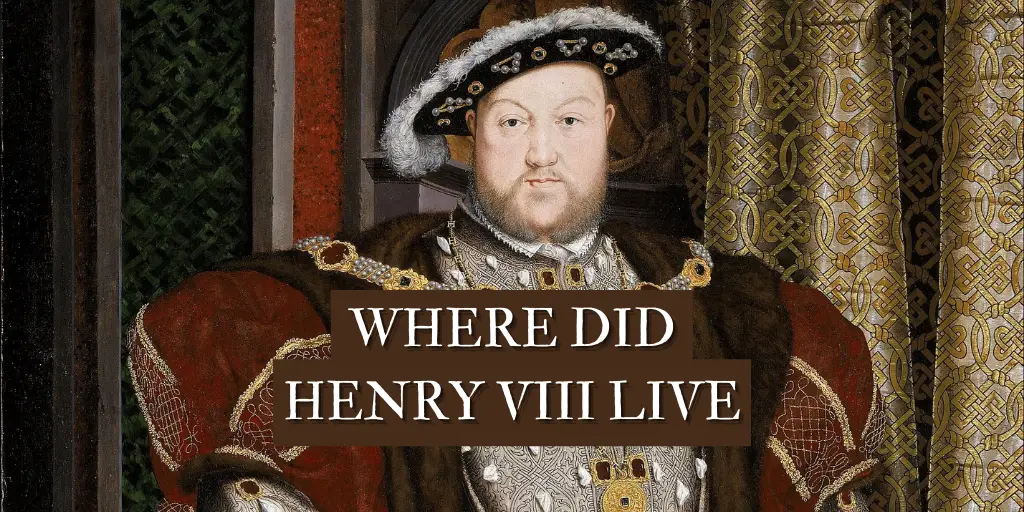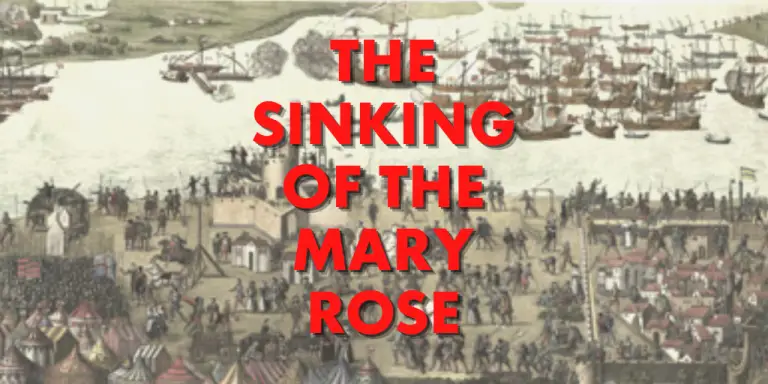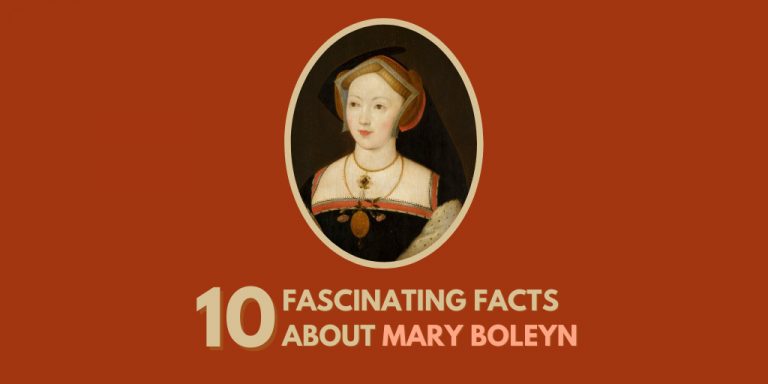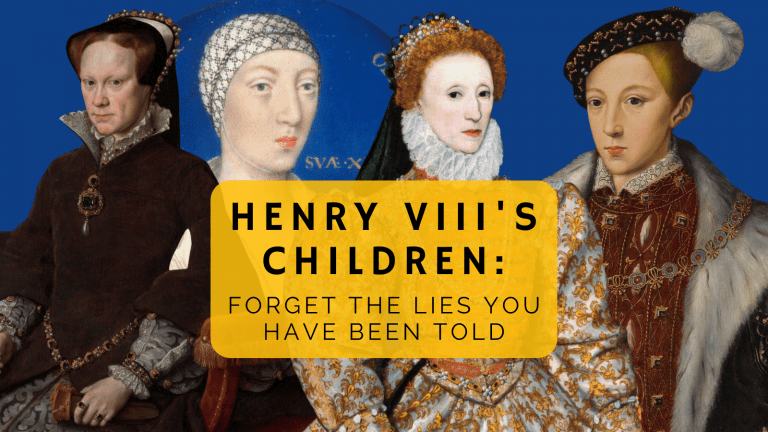Where did Henry viii live?
Henry VIII owned over sixty palaces, castles, houses and hunting lodges. It is safe to say that he didn’t live in them all.
He owned so many that he didn’t even visit them all during his lifetime. Others, especially around modern-day London, he spent many nights living there.
Movement between the royal residences was common and frequent. During the summer months, Henry would rarely spend time in central London because of fears of the plague. Hampton Court, then a good distance from the city, would be often used.
Henry VIII wouldn’t just live in his own homes; he would often go on a royal progress. This involved travelling around the country, staying in the homes of his subjects…at their expense.
In this article, we look at ten of the most interesting of Henry VIII’s homes.
[/et_pb_text][/et_pb_column][/et_pb_row][et_pb_row _builder_version=”4.7.7″ _module_preset=”default”][et_pb_column type=”4_4″ _builder_version=”4.7.7″ _module_preset=”default”][et_pb_text _builder_version=”4.7.7″ _module_preset=”default”]Eltham Palace
[/et_pb_text][/et_pb_column][/et_pb_row][et_pb_row _builder_version=”4.7.7″ _module_preset=”default”][et_pb_column _builder_version=”4.7.7″ _module_preset=”default” type=”4_4″][et_pb_image src=”http://historywithhenry.com/wp-content/uploads/2021/09/Eltham_Palace-8242930494-scaled.jpg” _builder_version=”4.7.7″ _module_preset=”default” title_text=”Eltham_Palace-8242930494″ hover_enabled=”0″ sticky_enabled=”0″][/et_pb_image][/et_pb_column][/et_pb_row][et_pb_row _builder_version=”4.7.7″ _module_preset=”default”][et_pb_column type=”4_4″ _builder_version=”4.7.7″ _module_preset=”default”][et_pb_text _builder_version=”4.7.7″ _module_preset=”default”]Eltham Palace was the first place that Henry VIII would have called home. It is near Greenwich, close to the Thames and remains standing today.
The original building was built in the 1300s and given to King Edward II by the Bishop of Durham.
Henry VII used it as a nursery for his younger children. Prince Henry and the majority of his siblings lived there. It is depicted in the famous portrait that shows the children of Henry VII meeting with Thomas More and Erasmus. You can see the ships going up and down the Thames out of the window, which highlights how close it was to the river.
Henry lived here for most of his early life until the death of his older brother, Prince Arthur. After Arthur’s death, Henry was the heir; he was moved out of the palace and then lived wherever his father was residing at the current time.
[/et_pb_text][/et_pb_column][/et_pb_row][et_pb_row _builder_version=”4.7.7″ _module_preset=”default”][et_pb_column type=”4_4″ _builder_version=”4.7.7″ _module_preset=”default”][et_pb_text _builder_version=”4.7.7″ _module_preset=”default”]Greenwich Palace
[/et_pb_text][/et_pb_column][/et_pb_row][et_pb_row _builder_version=”4.7.7″ _module_preset=”default”][et_pb_column _builder_version=”4.7.7″ _module_preset=”default” type=”4_4″][et_pb_image src=”http://historywithhenry.com/wp-content/uploads/2021/09/An_historical_account_of_the_Royal_Hospital_for_Seamen_at_Greenwich_1789_14786307743-scaled.jpg” _builder_version=”4.7.7″ _module_preset=”default” title_text=”An_historical_account_of_the_Royal_Hospital_for_Seamen_at_Greenwich_(1789)_(14786307743)” hover_enabled=”0″ sticky_enabled=”0″][/et_pb_image][/et_pb_column][/et_pb_row][et_pb_row _builder_version=”4.7.7″ _module_preset=”default”][et_pb_column type=”4_4″ _builder_version=”4.7.7″ _module_preset=”default”][et_pb_text _builder_version=”4.7.7″ _module_preset=”default”]Greenwich Palace is sometimes called the Palace of Placentia.
It was situated on the banks of the River Thames for easy access by barge. It was rebuilt extensively by Henry VII and is the birthplace of Henry VIII.
It was built around a design of three courtyards.
It was the principal royal palace during Henry’s VIII reign, and numerous important events took place here.
Both of Henry’s daughters, Mary I and Elizabeth I, were both born at Greenwich. Henry married Anne of Cleves there in 1540.
It was here that Henry VIII had his near-fatal jousting accident in the year 1536.
It was the final place he ever saw Anne Boleyn. He left the May Day jousts abruptly in 1536. The next day Anne was arrested and taken by barge down the Thames to the Tower of London.
The place no longer stands, which is a pity considering the events that took place there. Greenwich Hospital now stands on much of the old building. There is now a marker on the floor that commemorates the birth of Henry VIII, Mary I, and Elizabeth I.
[/et_pb_text][/et_pb_column][/et_pb_row][et_pb_row _builder_version=”4.7.7″ _module_preset=”default”][et_pb_column type=”4_4″ _builder_version=”4.7.7″ _module_preset=”default”][et_pb_text _builder_version=”4.7.7″ _module_preset=”default”]Whitehall Palace
[/et_pb_text][/et_pb_column][/et_pb_row][et_pb_row _builder_version=”4.7.7″ _module_preset=”default”][et_pb_column _builder_version=”4.7.7″ _module_preset=”default” type=”4_4″][et_pb_image src=”http://historywithhenry.com/wp-content/uploads/2021/09/The_Old_Palace_of_Whitehall_by_Hendrik_Danckerts.jpg” _builder_version=”4.7.7″ _module_preset=”default” title_text=”The_Old_Palace_of_Whitehall_by_Hendrik_Danckerts” hover_enabled=”0″ sticky_enabled=”0″][/et_pb_image][/et_pb_column][/et_pb_row][et_pb_row _builder_version=”4.7.7″ _module_preset=”default”][et_pb_column type=”4_4″ _builder_version=”4.7.7″ _module_preset=”default”][et_pb_text _builder_version=”4.7.7″ _module_preset=”default”]Whitehall Palace (or the White Hall) was originally called York Place. In his position as Archbishop of York, Thomas Wolsey, Henry VIII’s chief minister, owned the property. When Westminster Palace was destroyed by fire and Cardinal Wolsey fell, Henry VIII moved the royal residence in the centre of London to York Place.
The name White Hall was first seen in the official records in 1532, and it is believed that it was called such because of the white stone used for the buildings.
It was a complex warren of corridors and rooms. People new to the building would often get lost. At the time, it was the largest palace in Europe, with over 1,500 rooms.
The tiltyard for jousting still remains. It is now the site of the Horseguards Parade, where the Trooping of the Colour ceremony takes place each year.
Henry spent over 30,000 pounds on expansion and improvements during the 1540s. A considerable sum for the day.
After Henry’s death, in the year 1611, The Palace hosted the first-ever performance of Shakespeare’s play The Tempest in front of King James I. Changes and additions were made to the building long after the death of Henry VIII.
Today the palace no longer exists (the tiltyard and Banqueting House remain) as it was engulfed in flames in 1698.
Lost in the fire was the iconic mural of Henry VIII by Hans Holbein.
[/et_pb_text][/et_pb_column][/et_pb_row][et_pb_row _builder_version=”4.7.7″ _module_preset=”default”][et_pb_column type=”4_4″ _builder_version=”4.7.7″ _module_preset=”default”][et_pb_text _builder_version=”4.7.7″ _module_preset=”default”]Hampton Court
[/et_pb_text][/et_pb_column][/et_pb_row][et_pb_row _builder_version=”4.7.7″ _module_preset=”default”][et_pb_column _builder_version=”4.7.7″ _module_preset=”default” type=”4_4″][et_pb_image src=”http://historywithhenry.com/wp-content/uploads/2021/09/Great_Gate_Hampton_Court_Palace.jpg” _builder_version=”4.7.7″ _module_preset=”default” title_text=”UK, Surrey – Hampton Court Palace” hover_enabled=”0″ sticky_enabled=”0″][/et_pb_image][/et_pb_column][/et_pb_row][et_pb_row _builder_version=”4.7.7″ _module_preset=”default”][et_pb_column type=”4_4″ _builder_version=”4.7.7″ _module_preset=”default”][et_pb_text _builder_version=”4.7.7″ _module_preset=”default”]Hampton Court Palace is the iconic Tudor palace. The place literally screams Henry VIII. It is situated along the Thames in Richmond.
It was built by Cardinal Woolsey as his country retreat. He spent the outrageous sum of 200,000 crowns on its construction.
When Henry VIII was particularly annoyed with Wolsey, in an attempt to appease the king, the Cardinal gifted him the palace.
In the year 1529, Henry went about an extensive rebuilding process. It is famous for its red bricks, which were the very height of invention and style at the time. The vast kitchens quadrupled in size during Henry’s reign. That was so it could accommodate the vast court of over 1,000 people.
The Great Hall was the very last medieval-type structure to be built, and the country was within the great hall that the king would dine with his most favoured members of the court. It is this that people often think of when the name Hampton Court is mention. It took just five years to complete and Henry was so impatient for it to happen. Henry was so impatient for it to be finished the masons were required to work on shifts throughout the night.
Henry spent significant amounts of time there, and it was where his heir, Edward, was born. It was also the place where Jane Seymour died. It was also here that Catherine Howard was arrested. It is said that her ghost still walks the Haunted Gallery.
The astronomical clock was installed in the year 1540. It shows the time of the day, the phases of the moon, the month, the quarter of the year, the date, the sun and star sign, and high water at London Bridge. It was, and remains, a marvel of engineering.
[/et_pb_text][/et_pb_column][/et_pb_row][et_pb_row _builder_version=”4.7.7″ _module_preset=”default”][et_pb_column type=”4_4″ _builder_version=”4.7.7″ _module_preset=”default”][et_pb_text _builder_version=”4.7.7″ _module_preset=”default”]Windsor Castle
[/et_pb_text][/et_pb_column][/et_pb_row][et_pb_row _builder_version=”4.7.7″ _module_preset=”default”][et_pb_column _builder_version=”4.7.7″ _module_preset=”default” type=”4_4″][et_pb_image src=”http://historywithhenry.com/wp-content/uploads/2021/09/Windsor_Castle_Hollar_View_From_River.jpg” _builder_version=”4.7.7″ _module_preset=”default” title_text=”Windsor_Castle_Hollar_View_From_River” hover_enabled=”0″ sticky_enabled=”0″][/et_pb_image][/et_pb_column][/et_pb_row][et_pb_row _builder_version=”4.7.7″ _module_preset=”default”][et_pb_column type=”4_4″ _builder_version=”4.7.7″ _module_preset=”default”][et_pb_text _builder_version=”4.7.7″ _module_preset=”default”]Construction on Windsor Castle was started after the Battle of Hastings by William the Conqueror.
Henry VIII enjoyed staying there and hunting in the great park. During the Pilgrimage of Grace, Henry used it as his command centre, as it was the most secure of his homes.
Like most of the homes and castles he owned, he carried out improvements. He rebuilt the gateway that now bears his name and added a tennis court.
In St George’s Chapel, within the walls of the castle, Henry added an Oriel window for the use of Catherine of Aragon while they were in residence.
The castle remains a royal residence now. The Queen splits her time between the castle and Buckingham Palace.
Tower of London
[/et_pb_text][/et_pb_column][/et_pb_row][et_pb_row _builder_version=”4.7.7″ _module_preset=”default”][et_pb_column _builder_version=”4.7.7″ _module_preset=”default” type=”4_4″][et_pb_image src=”http://historywithhenry.com/wp-content/uploads/2021/09/Tower_of_London_south_Buck_brothers.jpg” _builder_version=”4.7.7″ _module_preset=”default” title_text=”B1977.14.18624″ hover_enabled=”0″ sticky_enabled=”0″][/et_pb_image][/et_pb_column][/et_pb_row][et_pb_row _builder_version=”4.7.7″ _module_preset=”default”][et_pb_column type=”4_4″ _builder_version=”4.7.7″ _module_preset=”default”][et_pb_text _builder_version=”4.7.7″ _module_preset=”default”]The Tower of London is remembered as a prison. But it was a royal palace.
It was only during the Tudor era that it gained its reputation as a prison. Before then, monarchs would regularly use the Tower as a residence.
Henry VIII followed the tradition of staying at the Tower of London the night before his coronation.
He also lived within its walls for a short while when he was a boy. There was a rebellion against the rule of his father, Henry VII. The royal family was placed in the Tower for protection while his father went to defeat the rebels.
Henry carried out building work with the Tower. He added rooms for Anne Boleyn so that he might be able to stay there before she was crowned. His most notable addition was the four domes on top of the turrets of the White Tower.
[/et_pb_text][/et_pb_column][/et_pb_row][et_pb_row _builder_version=”4.7.7″ _module_preset=”default”][et_pb_column type=”4_4″ _builder_version=”4.7.7″ _module_preset=”default”][et_pb_text _builder_version=”4.7.7″ _module_preset=”default”]St James’s Palace
[/et_pb_text][/et_pb_column][/et_pb_row][et_pb_row _builder_version=”4.7.7″ _module_preset=”default” column_structure=”1_5,3_5,1_5″][et_pb_column _builder_version=”4.7.7″ _module_preset=”default” type=”1_5″][/et_pb_column][et_pb_column _builder_version=”4.7.7″ _module_preset=”default” type=”3_5″][et_pb_image src=”http://historywithhenry.com/wp-content/uploads/2021/09/St_Jamess_Palace_and_The_Mall_Kip_1715.jpg” _builder_version=”4.7.7″ _module_preset=”default” title_text=”St_James’s_Palace_and_The_Mall_Kip_1715″ hover_enabled=”0″ sticky_enabled=”0″][/et_pb_image][/et_pb_column][et_pb_column _builder_version=”4.7.7″ _module_preset=”default” type=”1_5″][/et_pb_column][/et_pb_row][et_pb_row _builder_version=”4.7.7″ _module_preset=”default”][et_pb_column type=”4_4″ _builder_version=”4.7.7″ _module_preset=”default”][et_pb_text _builder_version=”4.7.7″ _module_preset=”default”]Henry VIII built this palace in the centre of London in a five-year period between 1531 and 1536. It looks remarkably similar to Hampton Court, and today it is considered the “most senior” of the Royal Palaces.
In comparison to Whitehall Palace, it was tiny, and Henry himself rarely used it. However, Elizabeth I enjoyed staying at it. She was here when she learned that the Spanish Armada had been spotted.
It is here the accession council meet upon the death of a monarch.
Henry VIII’s daughter, Mary, surrendered the final English holding in France, Calais, when she signed a treaty in 1558. She also died in the palace saying that when they cut her body open, they would find the name of Calais within it.
[/et_pb_text][/et_pb_column][/et_pb_row][et_pb_row _builder_version=”4.7.7″ _module_preset=”default”][et_pb_column type=”4_4″ _builder_version=”4.7.7″ _module_preset=”default”][et_pb_text _builder_version=”4.7.7″ _module_preset=”default”]Nonsuch Palace
[/et_pb_text][/et_pb_column][/et_pb_row][et_pb_row _builder_version=”4.7.7″ _module_preset=”default” column_structure=”1_5,3_5,1_5″][et_pb_column _builder_version=”4.7.7″ _module_preset=”default” type=”1_5″][/et_pb_column][et_pb_column _builder_version=”4.7.7″ _module_preset=”default” type=”3_5″][et_pb_image src=”http://historywithhenry.com/wp-content/uploads/2021/09/Nonsuch_Palace_watercolour_detail.jpg” _builder_version=”4.7.7″ _module_preset=”default” title_text=”Nonsuch_Palace_watercolour_detail” hover_enabled=”0″ sticky_enabled=”0″][/et_pb_image][/et_pb_column][et_pb_column _builder_version=”4.7.7″ _module_preset=”default” type=”1_5″][/et_pb_column][/et_pb_row][et_pb_row _builder_version=”4.7.7″ _module_preset=”default”][et_pb_column type=”4_4″ _builder_version=”4.7.7″ _module_preset=”default”][et_pb_text _builder_version=”4.7.7″ _module_preset=”default”]This palace was built near Cheam in Surrey by Henry VIII. If you haven’t worked out by now, Henry liked building palaces or improving them!
Unlike St James’ Palace, this was a building on an astronomical scale. Henry knocked down a village and a church to start the construction work.
Such was the scale of the work, the building wasn’t fully completed by the time Henry VIII died. We can’t even claim that Henry lived in it because he only visited it three times. However, it remains his most ambitious building project.
The palace was pulled down in 1683, and the materials were sold off.
[/et_pb_text][/et_pb_column][/et_pb_row][et_pb_row _builder_version=”4.7.7″ _module_preset=”default”][et_pb_column type=”4_4″ _builder_version=”4.7.7″ _module_preset=”default”][et_pb_text _builder_version=”4.7.7″ _module_preset=”default”]Richmond Palace
[/et_pb_text][/et_pb_column][/et_pb_row][et_pb_row _builder_version=”4.7.7″ _module_preset=”default”][et_pb_column _builder_version=”4.7.7″ _module_preset=”default” type=”4_4″][et_pb_image src=”http://historywithhenry.com/wp-content/uploads/2021/09/Wyngaerde_Richmond_1562.jpg” _builder_version=”4.7.7″ _module_preset=”default” title_text=”Wyngaerde_Richmond_1562″ hover_enabled=”0″ sticky_enabled=”0″][/et_pb_image][/et_pb_column][/et_pb_row][et_pb_row _builder_version=”4.7.7″ _module_preset=”default”][et_pb_column type=”4_4″ _builder_version=”4.7.7″ _module_preset=”default”][et_pb_text _builder_version=”4.7.7″ _module_preset=”default”]Henry’s father, Henry VII, built Richmond Palace on the site of Sheen Palace, around nine miles from Westminster. Henry VII died there in 1509, and it was where Prince Henry would have found out he was king. It was remembered for its many domed towers.
The most famous event occurred there in 1497 when a massive fire ripped the Palace apart. The royal family, including a six-year future Henry VIII, ran for their lives.
The palace was rebuilt, and Henry VIII celebrated Christmas there in 1510 with Catherine of Aragon. Their first son, Henry, Duke of Cornwall, was born on New Year’s Day 1511 but died two months later.
The palace held many unhappy memories for Henry. He first made it the official residence of his eldest daughter Mary I and then gave it away as part of the divorce settlement with Anne of Cleves.
[/et_pb_text][/et_pb_column][/et_pb_row][et_pb_row _builder_version=”4.7.7″ _module_preset=”default”][et_pb_column type=”4_4″ _builder_version=”4.7.7″ _module_preset=”default”][et_pb_text _builder_version=”4.7.7″ _module_preset=”default”]Knole
[/et_pb_text][/et_pb_column][/et_pb_row][et_pb_row _builder_version=”4.7.7″ _module_preset=”default” column_structure=”1_5,3_5,1_5″][et_pb_column _builder_version=”4.7.7″ _module_preset=”default” type=”1_5″][/et_pb_column][et_pb_column _builder_version=”4.7.7″ _module_preset=”default” type=”3_5″][et_pb_image src=”http://historywithhenry.com/wp-content/uploads/2021/09/Knole_from_Morriss_Seats_of_Noblemen_and_Gentlemen_1880.jpg” _builder_version=”4.7.7″ _module_preset=”default” title_text=”Knole_from_Morris’s_Seats_of_Noblemen_and_Gentlemen_(1880)” hover_enabled=”0″ sticky_enabled=”0″][/et_pb_image][/et_pb_column][et_pb_column _builder_version=”4.7.7″ _module_preset=”default” type=”1_5″][/et_pb_column][/et_pb_row][et_pb_row _builder_version=”4.7.7″ _module_preset=”default”][et_pb_column type=”4_4″ _builder_version=”4.7.7″ _module_preset=”default”][et_pb_text _builder_version=”4.7.7″ _module_preset=”default”]This house in Sevenoaks, Kent, still stands today and is owned by the National Trust. It is surrounded by a magnificent deer park.
It was owned by Henry VIII after Archibishop Cranmer gave it to him. Henry’s interest in the property was probably due to the hunting possibilities.
It is included in this list as when you visit the property, you get a real sense of what many of the royal residences were like in Tudor, England. In fact, Knole is often used for filming for TV shows and films.
[/et_pb_text][/et_pb_column][/et_pb_row][/et_pb_section]





